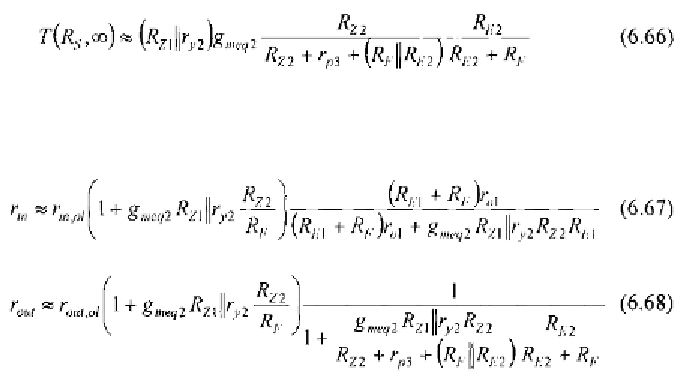Environmental Engineering Reference
In-Depth Information
which is usually lower than 1.
To calculate consider transistor T1 working as an ideal current
buffer having an input resistance at terminal X to be ideally zero. Thus,
current
is partitioned, and the part which flows through resistance
is
found also at terminal Z of T1. After some calculation we get
In conclusion, combining (6.64), (6.65) and (6.66) in the Blackman
relationships we get
6.5 A GENERAL VIEW OF SINGLE-LOOP AMPLIFIERS
From the cases discussed in the previous paragraphs of this chapter, it
clearly turns out that the Rosenstark method, and in particular the use of the
asymptotic gain, leads to a simplified description of a feedback amplifier in
terms of an ideal one with infinite loop gain. As the reader should well
know, a particular form of this approximation is common practice in opamp
analysis and design. This conducts to the well-known principle of virtual
short circuit. This approximation is of course adequately verified in feedback
circuits with large loop-gain, and allows to a calculation of the circuit
closed-loop gain that is considerably simpler then in the original circuit and
particularly suited for pencil-and-paper computation.
As a conclusion of this part of the chapter, we want to show that the four
classes of feedback amplifiers above analysed can be ultimately represented
with a circuit in which the transistor network is substituted by an ideal
differential amplifier having infinite voltage gain, infinite input resistance,
zero output resistance, and eventually an output current-controlled current
source.




